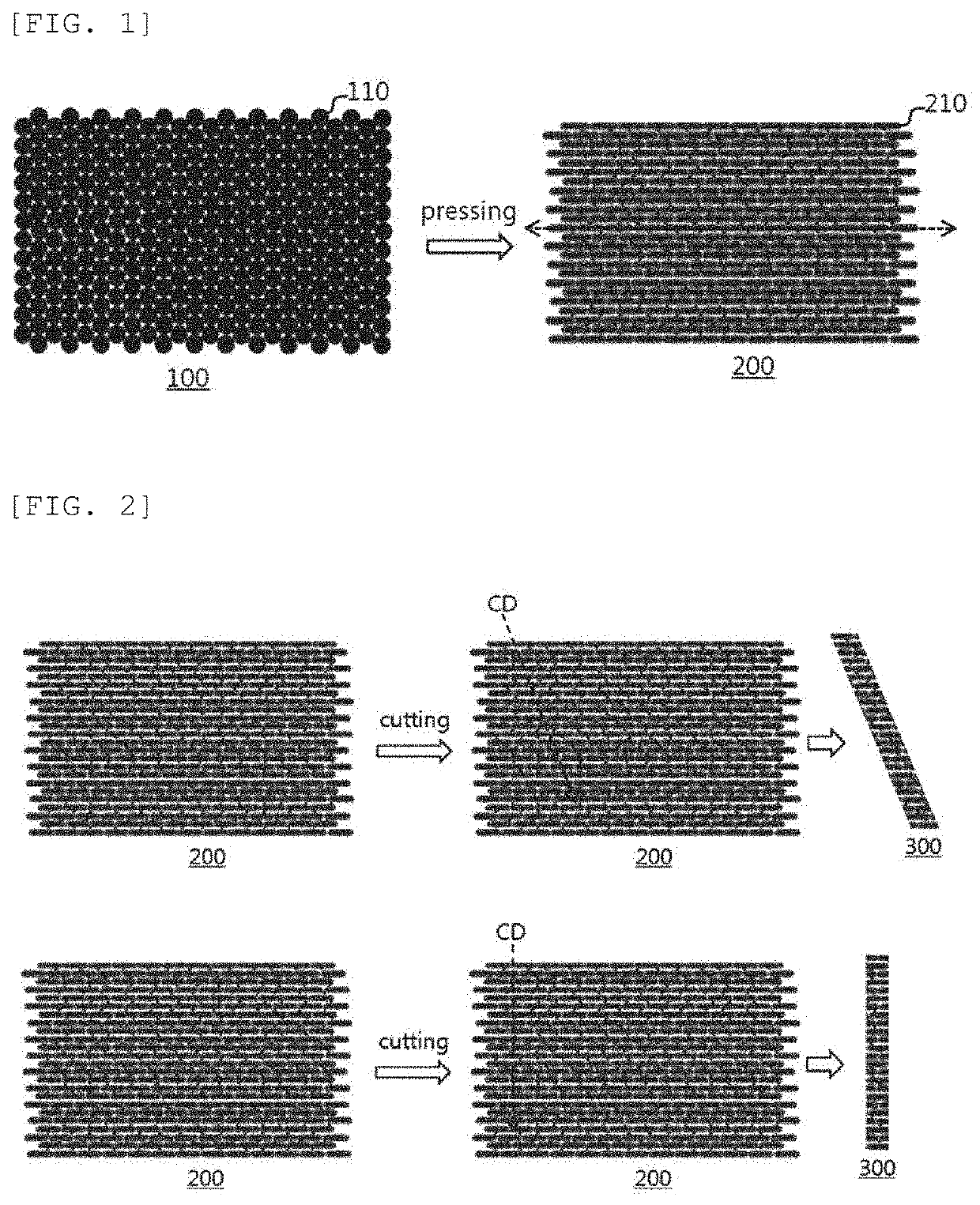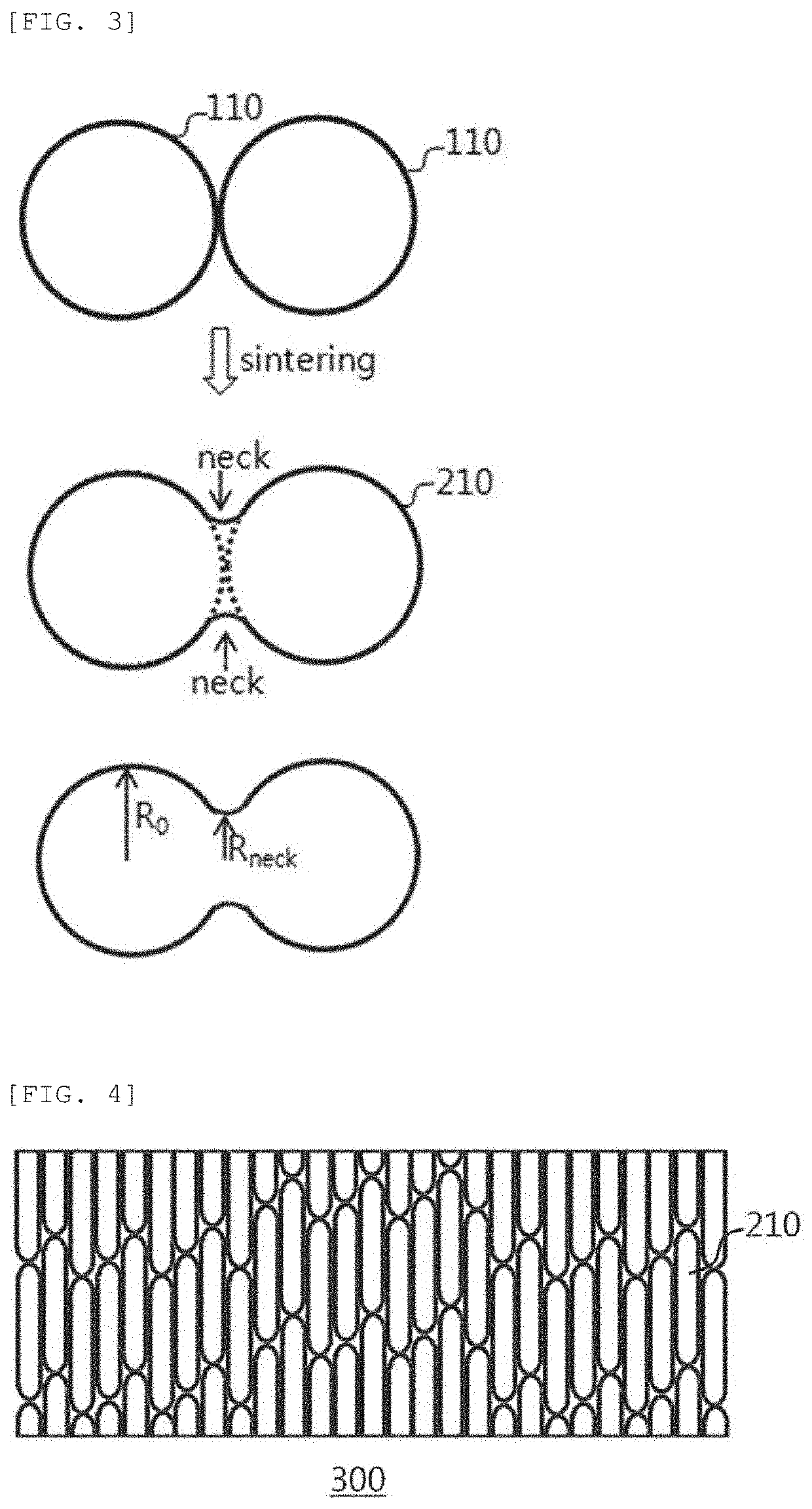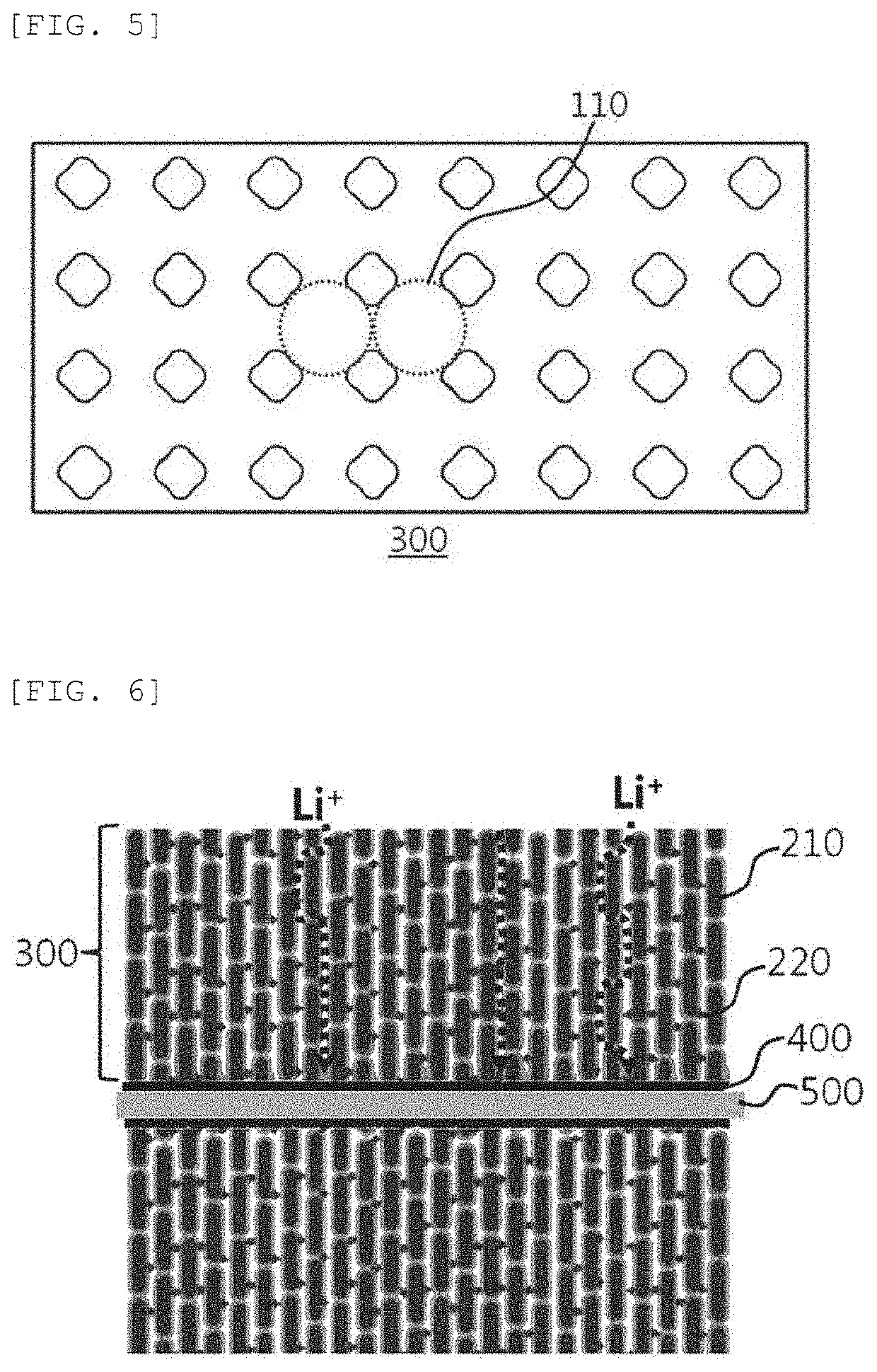Secondary battery electrode, and method for producing same
a secondary battery and electrode technology, applied in the manufacturing process of electrodes, cell components, electrochemical generators, etc., can solve the problems of increasing path complexity (tortuosity), increasing the travel distance of lithium ions, etc., and achieves easy and inexpensive process building, high degree of process control, and excellent commerciality
- Summary
- Abstract
- Description
- Claims
- Application Information
AI Technical Summary
Benefits of technology
Problems solved by technology
Method used
Image
Examples
Embodiment Construction
Example 2Negative electrode 1.73 (g / cm3) 1.70 (g / cm3) 1.70 (g / cm3)active material densityNegative electrode 49.4 (g / cm2) 13.1 (g / cm2) 23 (g / cm2)active material loadingamountNegative electrode 280 (μm) 87 (μm) 145 (μm)active materialthicknessNegative electrode 19.8 (%) 20.4 (%) 20.2 (%)active material porosityCapacity at 0.1 C363.7 (mAh / g)362.5 (mAh / g)361.3 (mAh / g)Initial charge / discharge 94.4 (%) 91.4 (%) 91.5 (%)efficiencyCapacity at 2 C353.5 (mAh / g)320.8 (mAh / g)225.1 (mAh / g)2 C / 0.1 C capacity97.2888.5%62.3%retention ratio
[0267]As seen from Table 1, it was found that when the active material layer is produced using the conventional active material slurry, as a loading amount is increased, resistance is increased by an organic binder and the like, so that the capacity is decreased, and in particular at a high ratio, a large capacity decrease occurred. However, it was found that the electrode produced according to an exemplary embodiment of the present invention maintained an o...
PUM
| Property | Measurement | Unit |
|---|---|---|
| porosity | aaaaa | aaaaa |
| porosity | aaaaa | aaaaa |
| length | aaaaa | aaaaa |
Abstract
Description
Claims
Application Information
 Login to View More
Login to View More - R&D
- Intellectual Property
- Life Sciences
- Materials
- Tech Scout
- Unparalleled Data Quality
- Higher Quality Content
- 60% Fewer Hallucinations
Browse by: Latest US Patents, China's latest patents, Technical Efficacy Thesaurus, Application Domain, Technology Topic, Popular Technical Reports.
© 2025 PatSnap. All rights reserved.Legal|Privacy policy|Modern Slavery Act Transparency Statement|Sitemap|About US| Contact US: help@patsnap.com



